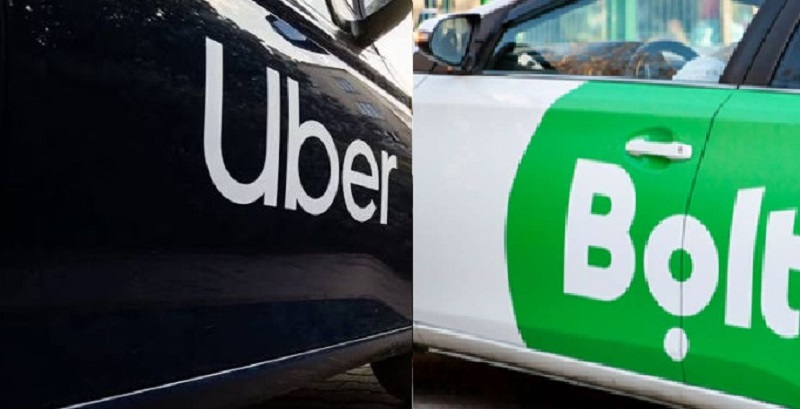In a recent push for change, the Amalgamated Union of App-based Transporters of Nigeria (AUATON) in Lagos revealed that ride-hailing giants Uber and Bolt collectively earn over ₦36 billion annually from their operations in the city through their 25% commission on every trip—about ₦100 million each day from the work of over 10,000 drivers.
AUATON, has accused these ride-hailing companies of caring less about drivers despite raking in significant revenue from their hard work. The union disclosed this in a communique by its Financial Secretary, Comrade Dan Baba, in a chat with journalists as reported by TechNext.
According to Comrade Baba, the ride-hailing companies have not provided commensurate value to the drivers. Analysing how they arrived at this estimate, he noted that over 20,000 drivers currently operate in Lagos, with at least half (10,000) active daily.
“Each driver makes an average daily revenue of at least ₦40,000. Therefore, 10,000 drivers will rake in ₦400 million every single day. With commissions of 25%, it means the companies rake in ₦100 million each day, which is 25% of ₦400 million,” he explained.
To determine the monthly earnings, Comrade Baba multiplied the daily ₦100 million by 30 days, totalling ₦3 billion. Annually, this sums up to ₦36 billion. The drivers’ union believes this is a conservative estimate since more than 10,000 drivers work per day.
“This shows that Uber and Bolt make at least over 36 billion naira annually. Yet drivers who are the powerhouse of the industry that generate such huge funds are not treated properly,” the union FinSec added.
AUATON is demanding that Uber and Bolt reduce their commission on each ride to 5%-10%. They argue that this adjustment would still allow the companies to be profitable while providing drivers with a more sustainable income.
According to their calculations, a 10% commission would result in a daily revenue of ₦40 million, equating to ₦1.2 billion monthly and ₦14.4 billion annually. A 5% commission would yield ₦7.2 billion annually.
The union points out that a 10% commission on the estimated ₦400 million daily revenue would amount to ₦40 million per day, translating to ₦1.2 billion monthly and ₦14.4 billion annually in Lagos alone.
A 5% commission would mean ₦7.2 billion annually. They argue that this reduction would ensure drivers can sustain their businesses and livelihoods.
Drivers highlight that the 25% commission is forcing many to take offline trips, which are riskier and less regulated. They claim that the high commissions are pushing them to the brink, leading to substantial losses and making it difficult to maintain their vehicles and support their families.
The union also accused Uber and Bolt executives of living lavishly at the expense of drivers. They argue that despite investing heavily in their vehicles, many drivers struggle to make ends meet.
“Why do they choose to inflict pain on drivers with a whopping 25% commission? We demand an immediate stop to this as drivers can no longer earn reasonably and sustainably,” a union representative stated.
They emphasised that reducing the commission to 5%-10% would still be profitable for the companies while enabling drivers to cover their expenses and maintain a decent standard of living. The union has now threatened to shut down both apps through industrial action if their demands are not met to seek alternative platforms.
This situation in Nigeria mirrors similar challenges in Kenya, where drivers are pushing back against Uber’s fare structure by using union rate cards to charge higher fares. Kenyan drivers prioritise cash and mobile payments to bypass Uber’s pricing, with fare charts prominently displayed in vehicles.
Their efforts, including protests and negotiations, reflect the global struggle for fairer earnings among ride-hailing drivers.
Get passive updates on African tech & startups
View and choose the stories to interact with on our WhatsApp Channel
Explore




